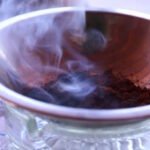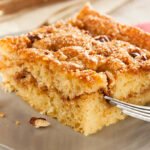If you’re experiencing coffee ground particles in the bottom of your cup coffee, then the great thing is that it’s typically caused by user error, and can be easily corrected.
To stop the coffee grounds from settling in your drink you should use a more coarse grind. You can also use less coffee, make sure that your paper filters are soaked enough to ensure that they adhere against the side of your holder and don’t tamp the coffee, unless you’re making espresso. It is important to ensure that the equipment is regularly cleaned to eliminate coffee grounds lodged in the equipment.
If you grind your own coffee, let me talk about how low-quality grinders could cause the issue. We’ll now take a close review of a variety of coffee grinders to assist you with the problem.
Did you know that Amazon offers an an extensive selection of items for sale within its coffee & Tea section?
drip coffee makers
There are a variety of causes why the drip device has begun to let grounds of coffee to flow to your coffee cup. So we’ll take a take a look.
Metal and plastic filters
If you’re using plastic or a metal filter with no paper, it is likely that certain grounds will be able to bypass the filter. The amount of sediment should not be so excessive that it causes drinking your coffee taste bitter.
Making excessively fine grind is a cause for an abundance of solids in your coffee as the holes of the filter’s mesh are deeper than those in the coffee that is finely ground.
If your coffee is precisely grinded (such like the one used to make espresso) it is possible that the coffee can also be an extremely dense mass that causes a buildup of water which pools up and flows over. The overflowing water may contain ground coffee that ends within your carafe.
A further cause for concern could result from drinking too much coffee to the capacity of your filter which can lead to an accumulation of water that may overflow.
Find coffee that has been specifically ground to be used in drip coffee makers, such as this medium grind coffee. If you’re making your own coffee beans select a moderate grind setting for the grinder.
For you to make sure that you’ve sufficient coffee to brew to ensure that you have the right amount of coffee, the thickness of the coffee within the filter must be approximately 3 to 5 centimetres.
Very little grinding is typical of metal or plastic filters which is why you need to add an paper filter to ensure your coffee completely free of sediment. Make sure to ask your coffee maker manufacturer about the amount of the paper filter you’ll need.
To find a maker for coffee which produces the purest cup of coffee available through the ultra-thick filter paper you should look at Chemex, the cult Chemex.
Paper filters
If you’re making use of high-quality filters for paper then you should not have any coffee ground particles in your coffee. It’s good news that the solution is generally quite easy when the grounds have escaped from the filter.
If you attach a filter made of paper to the coffee maker it won’t stick to the walls.
A grind that is too fine or using too much coffee could create a water buildup that spills over into the gap between the filter basket and the basket for filtering.
The result is a lot of ground coffee to get swept away because there’s no filtering from the basket. This results in an extremely muddy cup of coffee.
Another concern of paper filters is the force from the water crashing against the paper filter can cause it to break which allows water and coffee to spill over.
The technique is it is first wet the filter in the basket using water that is hot from your tap. The paper is able to stick against the side of the container, completely eliminating the risk of coffee grounds escaping the filter.
This is a great benefit because this method also improves the flavor of your coffee since a filter without rinsing creates a tangy flavor to the coffee. Do you believe me? Do a test by soaking a filter made of paper in water for 5 minutes, then give the water a flavor.
To get a complete guide on how to prepare drip coffee with the right technique, I would suggest that you check out this video.
Moka Pot
While a small amount of coffee grind might end up in the moka coffee the quantity should not be excessive that it renders drinking the coffee taste unpleasant. If that’s the situation Here are some solutions.
Make adjustments to grind size
It’s common to find instructions for making an espresso-like, very fine grinding size for the moka pot. Although it’s true it is important to have a small grind, it isn’t espresso-fine and you should try to coarsen the grind.
Because of the accumulation of pressure within moka pots, using the grind too fine permits the water to push an amount of ground coffee through the pores.
Another advantage of grinding the coffee a bit coarser is that it will be more delicate in flavor that’s not too robust, but not harsh or bitter.

Don’t tamp
Another belief is that tapping (pushing through) the coffee into this funnel would be the best technique.
In doing this, you will create more pressure, which forces out ground coffee. In order to avoid this All you need you do is put the coffee in the funnel and then level off using your fingers.
It will also be a more delicious coffee since the lower steam pressure does not scold the coffee and turn the coffee bitter.
Brew temperature and time of brewing
Another method to reduce concentration of sediment that is in moka espresso is to regulate the source of heat.
If the temperature is too intense, pressure can make coffee grinds flow into the upper chamber.
Turn off the heat and then remove the moka kettle from the sources of heat at the time you can hear it begin to vibrate. As soon as you’ve heard the moka pot gurgling, rinse the base of the moka pot using the tap that is cold for a few minutes to stop the process of brewing.
A second tip is to never serve the coffee in the moka pot immediately following the brewing. Allow the moka pot to remain for approximately two minutes in order for the grounds that are fine to fall into the lowest point. If you pour it gently the sediment, it will remain within the moka pot.
AeroPress filter hack
If you aren’t able to stand dirt within their cup, there’s one trick that’s getting ever more well-known.
If you have one of the AeroPress coffee maker, it will come with tiny circular filter paper which come with the maker. You can wet two or three filters then stick them on the bottom on the bottom of the filter plates (above that funnel).
The grinds aren’t able to travel to the top and resulting in a beautiful and clean moka pot cup with a strong knock-your-socks-off flavor.
For further information on how to use the right moka pot procedure take a look at this instructional video made by James Hoffmann of Square Mile coffee roasters located in UK. UK.https://www.youtube.com/embed/rpyBYuu-wJI?start=2&feature=oembed
French presse
It may be a surprise at the mention in this French presses in the list because it’s some amount of sediment in the cup is a part and integral to this coffee maker.
There is however the possibility of drastically reducing the amount of sediment in your coffee with just some simple techniques. Furthermore, one French press is particularly equipped with a an excellent filtration method which eliminates a lot of ground coffee dust.
Stirring
French press coffee is let to sit for at least four minutes. At that point, it is recommended to give the sputtering grounds a gently stirring.
It causes the coffee grounds at the top of the cup to drop into the base in the kettle. In accordance with the quality of the roasting process for the coffee and the roast level of your coffee, you may leave the coffee brewing for at least 10-minutes (less time for darker roasts and more time for lighter roast).
The additional time allowed for the coffee to settle to the bottom, and it also results in an evenly brewed coffee with the ability to enhance the flavor.
Plunging
After the coffee is allowed to settle and fully brew The next step is to plunge. The intention behind this is to press fully the plunger down to the lowest point of the brewer this can create a problem you’ve struggled to solve.
When you plunge towards the bottom by lowering the plunge, pressure whips the grounds of coffee, which causes them to escape the filter mesh.
To avoid this issue, move the plunger with care until just under the surface of your coffee. Pour the coffee in a slow way so that you don’t cause any disruption to the coffee that has been settling at the bottom then you’ll be left drinking a cup of French press coffee that’s nearly free of any sediment.
For those who want to watch the process in action, as well as for some additional French press-making suggestions, make sure to take a peek of this amazing video.https://www.youtube.com/embed/st571DYYTR8?feature=oembed
What is a higher quality French press decreases the danger of the formation of sediment
If you’d like to have French press coffee without sediment then you’ll have to invest in the most powerful of French presses Espro press. Espro presse.
A majority of French presses only have one mesh filter, which is held by a steel plate. This results in less than sufficient filtration because the plate’s metal doesn’t form an adequate seal to the walls of the carafe, which allows lots of ground to get through.
Another problem with traditional French presses is the mesh filter can become uneven over time. This is why you’ll see increasing amounts of grinds making the way to your drink.
Espro’s sediment-free filtering system
The answer to this issue is the Espro press as well as its dual-filtration system. The first filter is made of mesh with more holes, which allows the coffee to freely pour while a second one has smaller holes for capturing the coffee’s fine ground particles.
In order to increase the effectiveness both filters they each have a lip made of silicone which runs along the edge to form an airtight seal. The shape of the filter is also a guarantee that it won’t get distorted over time due to prolonged usage.
Espro also has other advantages. Espro offers other advantages, like being constructed from stainless steel with dual wall construction, which can not be broken and ensures that the coffee stays warm for hours.
Espro Espro is in the upper part of the price points. The best feature is that it’ll last for the rest of your life because it isn’t like glass French presses and other stainless steel presses, it won’t break. I’ve made a vow to never purchase glass.
If you’re in search of something less expensive, you should be sure to look into the sturdily constructed Bodum made of plastic French presses available on Amazon featuring a new filter.
You can also check out my entire analysis of the incredibly strong Bodum made of plastic, and find out my reasons for why I believe it’s the superior choice over glass.
The reason your coffee maker could cause the issue
Finally, let’s talk about coffee grinders. To make delicious tasting coffee, you need to purchase a high-quality burr mill. The best entry-level grinder I have found for use in the home is called the Baratza Encore.
In order to save some pennies Many people use blade grinders. The low-cost blade grinders may result in a lot of coffee ground particles to be deposited inside your coffee cup. Pwah.
While it’s wonderful to buy whole bean coffee, instead of grind, you can actually enhance the quality the coffee you buy by avoiding the grind completely.
The aim of coffee grinders is to create ground that is as homogeneous in their size as you can and are of the right dimension for the coffee maker you have.
Problems in blade grinders is the size of the grind is measured by the duration of time you are holding the power button. it is a concern due to two reasons:
- It is not possible to select the amount of grind you want.
- The blades make the mixture of coarse and fine grounds.
The process of brewing coffee is often compared with boiling potatoes. Yes, really. If you cut up potatoes for boiling it is important to make sure that each one is identical in size, so each piece takes exactly the same time to boil.
The same is true for coffee. When you have a mixture of fine and coarse grounds, the fine grounds get aEURoeover-cookedaEUR, causing a bitter taste, and the coarse grounds are aEURoeunder-cookedaEUR, causing a sour taste.
Additionally that the extremely tiny coffee grounds of your grinder blades could effortlessly get into your drink because they can override any filter.
Given the option of buying ground coffee that is already pre-ground or grinding the whole beans using a blade mill I’d go for the pre-ground coffee every time.
The roasters who grind their coffee employ extremely costly grinders, which produce an extremely uniform grind which is why I’d rather lose a bit of flavor and aroma in a cup that’s mixed with sour and bitter anytime.
There’s good news that you’ll be able to enjoy freshly-ground whole bean coffee by using high-end burr grinders starting as low at 35 dollars (APS25).







